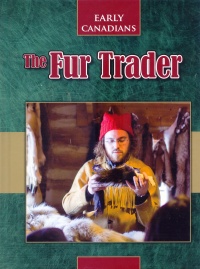| ________________
CM . . .
. Volume XX Number 27. . . .March 14, 2014
excerpt:
The Fur Trader is a beginning nonfiction text that is suitable for studentsí first foray into early Canadian history. It gives readers the reasons for the early origins of the fur trade, and they learn that furs were bought from local Aboriginals. They also learn that trading furs was a hard life, full of danger and adventure. It could also be more financially rewarding than a day-job in a store. The fur traderís day started early, ended after 15 hours of grueling paddling, and, at night, all they had to look forward too was a simple meal before collapsing into an exhausted sleep under their canoe. Students learn about the goods that were traded to the Aboriginals: metal pots, utensils, Hudson Bay point blankets, guns and ammunition. As well, they will learn how the traders navigated their way across Canada using compasses and sextants. Students become aware that Aboriginal women were essential to the fur trade. They were guides, knew about healing medicines and how to prepare the animal pelts. The women all so made pemmican, the main sustenance of fur traders. The Fur Trade contains a table of contents, a basic index and a glossary. It could have benefitted from the inclusion of a simple timeline to track the changes and development of the fur trade across Canada. As well, some of the illustrations and photograph from different historical eras have been placed side-by-side, and this placement might lead to confusions. Recommended. Ian Stewart teaches at Cecil Rhodes School in Winnipeg, MB.
To comment
on this title or this review, send mail to cm@umanitoba.ca.
Copyright © the Manitoba Library Association. Reproduction for personal
use is permitted only if this copyright notice is maintained. Any
other reproduction is prohibited without permission.
NEXT REVIEW |
TABLE OF CONTENTS FOR THIS ISSUE
- March 14, 2014.
AUTHORS |
TITLES |
MEDIA REVIEWS |
PROFILES |
BACK ISSUES |
SEARCH |
CMARCHIVE |
HOME |
